|
English makes a lot of sense once you learn how it has evolved over the past 1,400 years. Young readers, however, need to learn a bank of seemingly “irregular” words (otherwise known as “red words” in OG circles) before they are necessarily ready to comprehend the complexity of the English language. Words like “was” and “give” seem like rule breakers, but are they really? The letter <a> often makes the schwa sound and the <e> in “give” seems unnecessary until you realize no words in English end in <v>, hence the added silent <e>. So what’s a teacher to do? How can we help our young learners add to their bank of “red words”? This brief video will demonstrate how to teach students to read and spell red words.
2 Comments
According to the National Reading Panel Report, phonemic awareness plays a critical role in the reading process. Phonemic awareness instruction should begin in Kindergarten, first with tokens and then with letters. What activities can Kindergarten and first grade teachers use with students to promote both phonemic awareness and letter knowledge? The videos below model two different routines that can be woven into literacy instruction with a whole class or in small groups. To learn more about the resources shown, visit: https://learn.readintervention.com/ I spent 18 years as a general education classroom teacher in a variety of grade levels. Over that time, I encountered many students, who despite my best efforts, still struggled to read. Some problems were severe, like one fourth grader who read on a Kindergarten level, while others had more mild challenges. Some students ended up receiving special education services, but most did not. It was a frustrating road that often left me feeling inadequate and ineffective. That changed in 2014. A colleague approached me about a local training on something called "Orton-Gillingham." I had heard of it and knew it was a method used to help dyslexic students read. I wanted the tools to help my students and couldn’t wait to dive in. This intensive graduate level program opened my eyes to the reading science and a Structured Literacy™ approach to teaching reading. For the first time, I felt empowered by having a set of tools to help any student who walked through my door. I simultaneously felt relieved and annoyed by my newfound knowledge: relieved that I was now ready to help my students but annoyed that I had spent almost ten thousand dollars of my own money to learn something I should have learned in college or from my school district. Teachers shouldn’t have to wait until 15 years into their teaching career to grasp these foundational literacy concepts. The information has been available since 2000, when the National Reading Panel published their report on the reading research, yet the science isn’t making it into the classroom. Why aren’t teachers learning the science, and where does change begin? Does it begin at the federal or state level? Does it start with the Universities bringing the reading science into their teacher preparation programs? I don't have the answers to these questions, but I do know that every teacher of reading should have the fundamental knowledge of how the brain reads and what methods have been validated by research. Whether we call it Structured Literacy™, a term coined by the International Dyslexia Association, or Orton-Gillingham, the first method of helping dyslexics created my Samuel Orton in the 1930's, our teachers need to learn more about it. This methodology is essential for the 10-20% of our population who are dyslexic, necessary for the 30-40% of our students who require explicit training in phonemic awareness and phonics (Kilpatrick, 2016), and helpful to the remainder of the population who will likely learn to read quite well with any instructional approach. In the primary grades it isn’t always clear which students are going to struggle, so why not provide all students with systematic explicit instruction that aligns with the reading science? So yes, Structured Literacy approaches like Orton-Gillingham belong in general education classrooms. With over 60% of American fourth graders failing to read proficiently, it’s time to make a change. It’s time to follow the science. To learn more about evidence-based instruction, visit: https://learn.readintervention.com/ I love this article from Education Week highlighting common mistakes teachers make in reading instruction. Despite their best intentions, teachers sometimes hinder their students' progress with certain instructional and procedural approaches. I highly suggest reading this article to avoid these common pitfalls.
8/22/2018 0 Comments Welcome to R.E.A.D InterventionR.E.A.D. Intervention offers tutoring and professional development services for reading instruction and dyslexia intervention using the Orton-Gillingham method. The office is in Bedminster TWP, just minutes from Basking Ridge, Bridgewater, Branchburg, and Bernardsville. Located in the heart of Bedminster, we are surrounded by local shopping centers and restaurants. Reach out today to see how R.E.A.D. Intervention can help your child experience reading success! For more information or to schedule an appointment, please send an email to jennifer@readintervention.com.
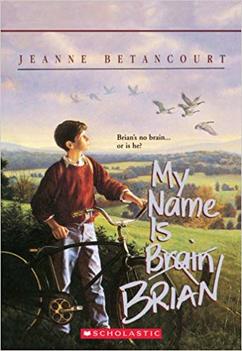 My name is Brain Brian This outstanding book by Jeanne Betancourt, portrays the life of a boy who struggles to hide his dyslexia from his friends. Based on the author's personal experience as a dyslexic, this novel is "drawn from real insight". 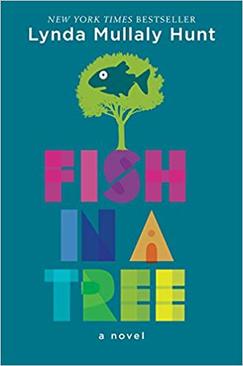 Fish in a Tree Ally has been smart enough to fool a lot of smart people. Every time she lands in a new school, she is able to hide her inability to read by creating clever yet disruptive distractions. She is afraid to ask for help; after all, how can you cure dumb? However, her newest teacher Mr. Daniels sees the bright, creative kid underneath the trouble maker. With his help, Ally learns not to be so hard on herself and that dyslexia is nothing to be ashamed of. As her confidence grows, Ally feels free to be herself and the world starts opening up with possibilities. She discovers that there’s a lot more to her—and to everyone—than a label, and that great minds don’t always think alike. 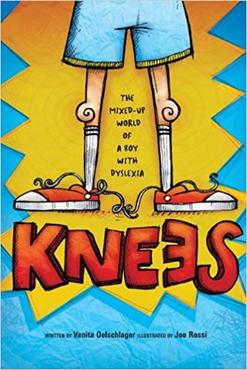 Knees: The mixed up world of a boy with dyslexia This is a good book for kids dealing with dyslexia. The author explains what life is like for a child with dyslexia, from backward letters and numbers, to words jumbling in the air and falling into his ear messed up and difficult to understand. 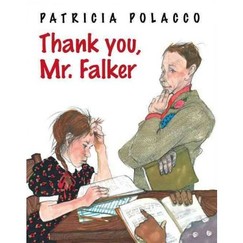 Thank You, Mr. Falker This is one of my all time favorite picture books! The story's main character, Trisha, so badly wants to read. Due to her undiagnosed dyslexia, she struggles with reading until with her 5th grade teacher, Mr. Falker, discovers her secret and teaches her how to read. On the last page of the story, the author reveals that "Trisha" is Patricia Polacco, and Mr. Falker was the teacher who changed her life. Have a box of tissues handy while reading this beautiful story - I can never make it through dry eyed! 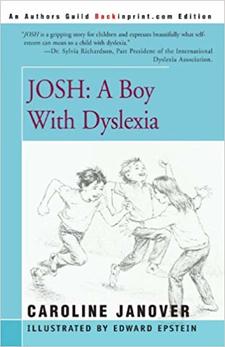 Josh: A Boy With Dyslexia This is the first children's book I ever read featuring a main character with dyslexia. It was part of a fourth grade study about "understanding differences." My students loved reading this book, along with Janover's book, Zipper: A Kid with ADHD. It gave them a glimpse into someone else's life and struggles. It also taught them that a disability doesn't define a person or their worth. |
Meet the AuthorJennifer Cerra is the founder of R.E.A.D. Intervention. She has been working with students as an educator since 1998. Jennifer received her B.A. in English Literature from Boston University and her M.Ed. in Elementary Education from Lesley University. She is also a certified reading specialist and Orton-Gillingham practitioner who received training through Fairleigh Dickinson University, an accredited IMSLEC graduate level program. After working in the public school sector for over 20 years, Jennifer decided to dedicate her passion for literacy instruction to private students struggling to read and founded R.E.A.D. Intervention. Based on R.E.A.D.’s success with students, she was approached by educational leaders and asked to provide in-person professional development on using evidence-based methods such as Orton-Gillingham. In order to deliver the content to a wider audience in a cost effective manner, R.E.A.D. created online learning modules and resources to support the delivery and implementation of this instruction. We are excited to partner with educators to help their students unlock the code and experience reading success! To learn more about R.E.A.D.'s online training offerings, visit: https://learn.readintervention.com/ Archives
February 2021
Categories |
Address254 Highway 202/206
1st Floor Bedminster, NJ 07921 |
Telephone 973-886-2351
|
Email
jennifer@readintervention.com
|
CreditsIllustration Art by: lolagraphicimages.etsy.com
Photos by: Sharon McCutcheon. Debbie Hudson, Eniko Kis -Unsplash; Tero Vesalaine - Pixabay; Photo by Daniel Fazio on Unsplash |



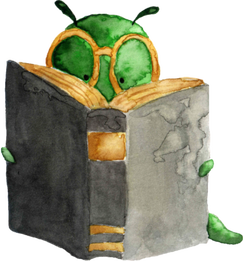
 RSS Feed
RSS Feed
